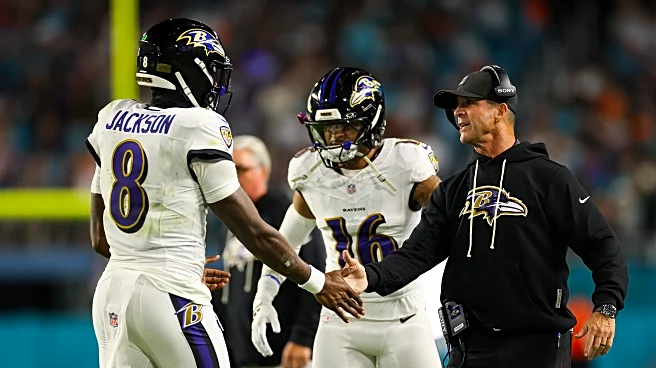What's Happening?
In Week 10 of the NFL season, several key fantasy football players are on bye, impacting lineup decisions for fantasy managers. Notable players from the Cincinnati Bengals, Dallas Cowboys, Kansas City Chiefs, and Tennessee Titans are unavailable this
week. This includes prominent names such as Ja'Marr Chase, Tee Higgins, Chase Brown, Dak Prescott, CeeDee Lamb, Patrick Mahomes, and Travis Kelce. The absence of these players requires fantasy managers to adjust their strategies and seek alternative options to fill their rosters. The bye week presents challenges in maintaining competitive lineups, especially for those relying heavily on these teams' players.
Why It's Important?
The bye week for these high-profile players significantly impacts fantasy football leagues across the U.S. Managers must navigate the absence of top performers, which can alter league standings and playoff prospects. The need to find suitable replacements can lead to increased activity on waiver wires and trades, as managers seek to optimize their lineups. This situation underscores the importance of depth and strategic planning in fantasy football, as managers must anticipate and adapt to such disruptions. The absence of these players also affects betting markets and fan engagement, as games involving these teams may see shifts in dynamics and outcomes.
What's Next?
Fantasy managers will need to monitor injury reports and player performances closely to make informed decisions for Week 10. As the season progresses, the ability to adapt to bye weeks and player absences will be crucial for those aiming for playoff contention. Managers may explore trades or waiver wire pickups to bolster their rosters. Additionally, the return of these players in subsequent weeks will require reassessment of lineups and strategies. The ongoing management of player availability and performance will continue to be a key factor in fantasy football success.
Beyond the Headlines
The bye week scenario highlights the broader implications of player management in fantasy sports. It emphasizes the need for strategic foresight and flexibility, as managers must balance short-term disruptions with long-term goals. The dynamics of fantasy football reflect real-world sports management challenges, where adaptability and resourcefulness are essential. This situation also illustrates the interconnectedness of fantasy sports with real-world sports events, influencing fan engagement and sports media narratives.














